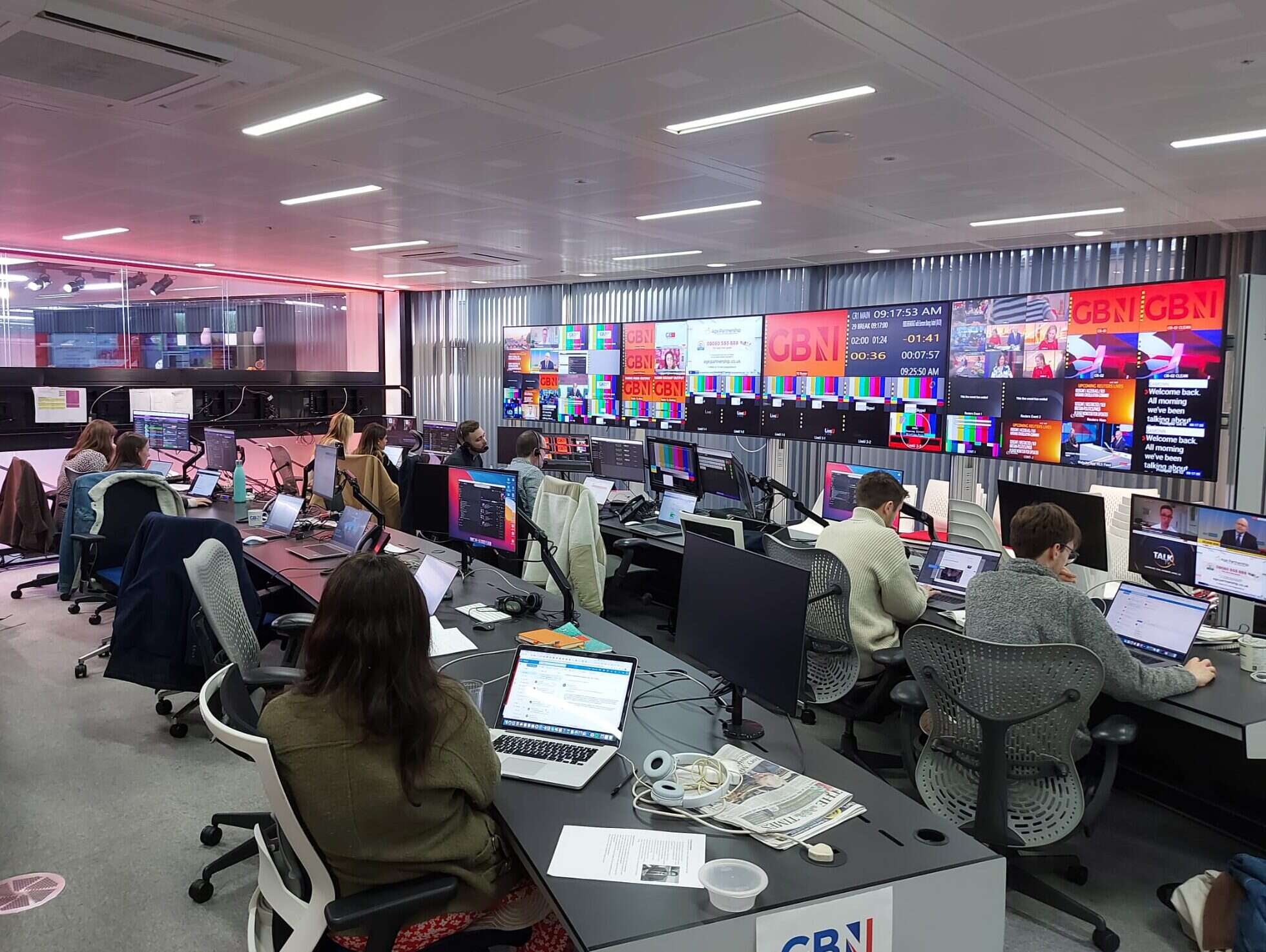Imagine a website with live video coverage of breaking news embedded in the home page – one that is also a souped-up Sky+ box, allowing you to spool back to earlier reports, but which also allows you to search the video by keywords.
Add to that an entire archive of reports, interviews and live spots, easily searchable and available on demand. Audio feeds, text stories, stills galleries, plus interactive graphics and maps would complete this multimedia cornucopia.
And you’d be able to contribute yourself: live news reports by mobile phone, text discussions, video chatrooms, and every other conceivable type of user-generated content, including regular blogs and messageboards, photo and videoboards.
There might even be “Wiki” news stories where you could add your own contributions to the sum of human knowledge.
You’d get it anywhere you wanted it – on your PC, your laptop, your mobile or PDA, as well as on your TV.
Futuristic and fantastic? On the contrary – all of this is completely possible today.
This vision was the basis of a short video I produced last year for a day-long Sky brainstorm.
The ideas had come from a report developed with a colleague which argued that 21st century internet technology and convergence presented new and exciting challenges and opportunities to news organisations, and there was no time to lose in exploiting them.
The video was meant to be an intellectual nudge in the ribs – a catalyst to debate.
But Sky’s head of news John Ryley had seen the future as well and – even more fired up – seized on it as a way of helping initiate change.
He showed it to Sky News staff, with the message to “innovate or die”, as well as to select outsiders including the Society of Editors’ conference. One national newspaper editor reportedly returned to his office and said “I’ve seen what Sky is planning and we are finished.”
Well, maybe. Sky News’s recently revamped and (though we say it ourselves) much improved website has moved some way down the road, with increased emphasis on video and other rich content. User numbers are good and getting better. It’s just a start.
None of this is to say that linear broadcast news is a thing of the past. Our strength remains the USP of the TV channel – being first and fastest with breaking news – but our aim is also to be the number one source of news video on the web.
All news organisations are grappling with the implications of convergence. We have parked our tanks on each other’s lawns.
Newspapers are venturing into video (with varying degrees of success). Broadcasters are debating whether they can use online to sometimes come off the impartiality fence where the regulators have always made them sit.
Writing style is under scrutiny – should it be more broadcast chatty or conventional newspaper journalese?
For Sky, at its most basic, convergence has meant integrating online journalists in the heart of the newsroom and training everyone on the intricacies of the content management system.
The online team has been buttressed by extra journalists and web developers.
Sky News journalists, who for years had only written broadcast scripts, have welcomed writing for the web. Producers who already knew how to cut video have eagerly grasped the joys of Photoshop.
The cultural issue is altogether tougher, not just for Sky News, but for all news organisations.
Most journalists have grown up with the idea that we tell people the news which we think they should be told.
Confession time: I was guilty too. I once argued that you wouldn’t trust a citizen journalist any more than a citizen heart surgeon. It was a paternalistic and sermonising approach that most of us shared, but it won’t do any more.
Web 2.0 (the generic name for the interactive internet) is giving the media to the people. Ondemand news means that people can choose the news they want, when they want it. And they can interact with it, rant about it, and contribute to it. The coming generation of news-users, the 16- to 24-year-olds, have grown up with this concept, and expect nothing less.
We are learning every day. A user, calling herself Paula, blogged a bright idea for our coverage of Madeleine McCann: put up the “missing” poster as a downloadable file which people could email to friends or print and display.
So far we have had nearly 100,000 downloads. Thanks, Paula.
The Virginia Tech shootings showed us a new sort of citizen journalism: live bloggers describing the awful events as they unfolded. It was raw but dynamic reporting.
We need to understand that people will give their time, their energy, their ideas and their creativity freely – just because they want to be part of it.
In the future, our users will be able to contribute increasingly to the website, with photos, messages, blogs and video. Sky News is also shortly to launch in Second Life – where residents will roam our virtual studio and experience news in a new dimension.
There’s another aspect to Web 2.0. Internet technology allows us to track how well stories are playing in real time. How much focus should newsdesks give to this instant monitor of audience enthusiasm? Taken to its logical conclusion, it might produce a very skewed and strange editorial agenda.
Which is why the world will always need professional journalists. Ultimately, the role of the journalist remains what it has always been: to gather, sift, authenticate, prioritise and communicate stories effectively. Trustworthiness and accountability will be the key attributes for news websites alongside speed and accuracy.
These are exciting times to be a journalist – the most exciting I have known in my career. The world is changing and new technology is coming so fast that almost every day brings a new opportunity.
The main thing is to keep trying new ideas.
Some will succeed brilliantly, some will hit the rocks spectacularly. As Woody Allen observed: “If you’re not failing every now and again, it’s a sign you’re not doing anything very innovative.”
Email pged@pressgazette.co.uk to point out mistakes, provide story tips or send in a letter for publication on our "Letters Page" blog






